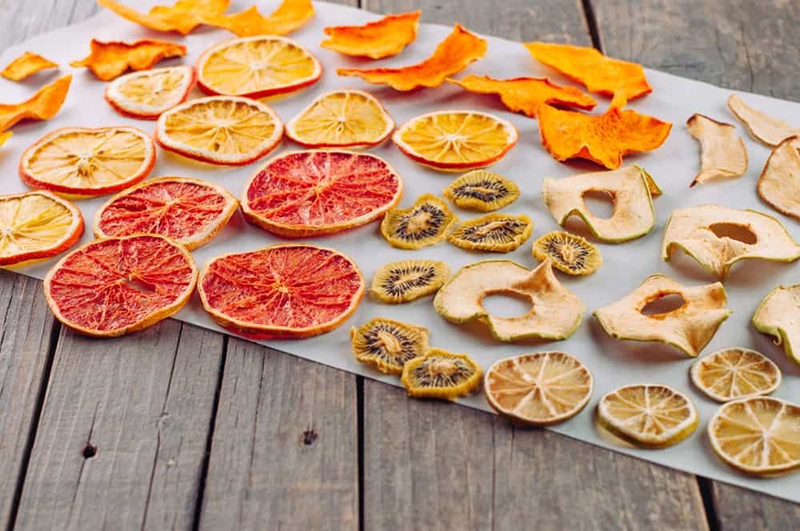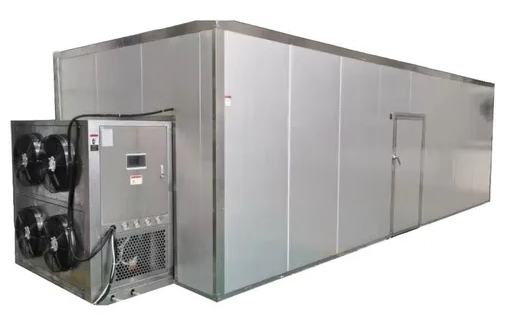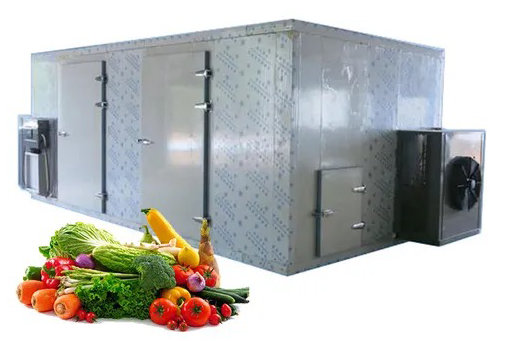
Content Menu
● Understanding Food Drying
● Types of Food Dehydrators
● Condensation Dryer vs. Heat Pump Dryer
>> Condensation Dryer
>> Heat Pump Dryer
● Cost Analysis
>> 1. Initial Costs:
>> 2. Energy Efficiency:
>> 3. Maintenance Costs:
● Performance Comparison
● Environmental Considerations
● Technological Advances
● Conclusion
● FAQ
>> 1. What are the main differences between condensation and heat pump dryers?
>> 2. Which type of dryer is better for preserving nutrients in food?
>> 3. Are heat pump dryers worth the higher initial cost?
>> 4. How does humidity affect food drying?
>> 5. Can I use a home dehydrator for commercial purposes?
● Citations:
When it comes to food drying, choosing the right equipment is crucial for businesses aiming to produce high-quality dried products. This article will explore the differences between condensation dryers and heat pump dryers, particularly in the context of food drying, while providing insights into various types of food dehydrators, their operation, and benefits.

Understanding Food Drying
Food drying is a preservation method that removes moisture from food to inhibit the growth of bacteria, yeast, and mold. This process not only extends the shelf life of food but also retains its nutritional value and flavor. There are several methods of food drying, including:
- Air Drying: Utilizing ambient air to remove moisture.
- Freeze Drying: Involves freezing the food and then reducing the surrounding pressure to allow the frozen water in the food to sublimate.
- Microwave Drying: Uses microwave radiation to heat and evaporate moisture.
- Hot Air Drying: Circulates hot air around the food to promote moisture evaporation.
Among these methods, hot air drying is one of the most commonly used in industrial settings due to its efficiency and effectiveness.
Types of Food Dehydrators
There are several types of food dehydrators available on the market:
- Cabinet Dryers: Ideal for small to medium-scale operations, these dryers are compact and versatile. They can handle various products simultaneously, making them suitable for businesses that require flexibility in their drying processes.
- Tunnel Dryers: Suitable for large-scale production. They provide uniform drying by moving products through a heated tunnel. This method is efficient for high-volume operations as it allows continuous processing and minimizes labor costs.
- Rotary Dryers: These are designed for specific products requiring gentle handling during drying. The rotating drum ensures even exposure to heat and airflow, preventing product damage.
Each type has its advantages depending on production needs, space availability, and budget constraints. Understanding these differences is essential for businesses looking to optimize their drying processes.
Condensation Dryer vs. Heat Pump Dryer
When comparing condensation dryers and heat pump dryers, it's essential to understand their operational mechanisms and cost implications.
Condensation Dryer
A condensation dryer operates by heating air and circulating it through the drum containing wet items. The moisture in the air condenses on a cooling element and is collected in a tank or drained away.
- Pros:
- Generally lower initial purchase cost.
- Faster drying times compared to heat pump dryers.
- Simpler operation with fewer technical requirements.
- Easier installation since they don't require special ventilation systems.
- Cons:
- Higher energy consumption due to continuous heating.
- Less energy-efficient over time compared to heat pump models.
- May produce more heat in the surrounding area, which can be a concern in small facilities.

Heat Pump Dryer
Heat pump dryers use a heat exchanger system that recycles warm air within the dryer. They operate at lower temperatures, which can be gentler on delicate foods.
- Pros:
- More energy-efficient; uses less electricity over time.
- Better for preserving sensitive nutrients in food due to lower drying temperatures.
- Longer lifespan due to less wear on components.
- Environmentally friendly as they reduce overall energy consumption.
- Cons:
- Higher initial investment costs.
- Longer drying times compared to condensation dryers.
- More complex technology may require specialized maintenance.
Cost Analysis
To determine which dryer is cheaper to run, consider both initial costs and long-term energy consumption:
1. Initial Costs:
- Condensation dryers are typically more affordable upfront, making them attractive for small businesses or startups with limited budgets.
- Heat pump dryers require a higher initial investment but offer savings over time due to their energy efficiency.
2. Energy Efficiency:
- Heat pump dryers are significantly more energy-efficient. They can save up to 50% on energy costs compared to condensation dryers over their lifespan. This is particularly important for businesses operating on tight margins where every dollar counts.
3. Maintenance Costs:
- Heat pump dryers may have higher maintenance costs due to their complexity but often require less frequent repairs than condensation dryers. Regular maintenance can enhance performance and extend the lifespan of both types of dryers.
Performance Comparison
In addition to cost analysis, performance is another critical factor when choosing between condensation and heat pump dryers:
- Drying Time: Condensation dryers generally have faster drying cycles due to higher operating temperatures. However, this can lead to nutrient loss or degradation in sensitive foods.
- Quality of Dried Products: Heat pump dryers produce higher quality dried products by maintaining lower temperatures throughout the drying process. This helps preserve flavors, colors, and nutritional content better than condensation dryers.
- Flexibility: Heat pump dryers offer greater flexibility in terms of temperature control and humidity management, making them suitable for a wider range of products—from fruits and vegetables to meats and herbs.
Environmental Considerations
As sustainability becomes increasingly important in food production, energy-efficient appliances like heat pump dryers are gaining popularity. These machines not only reduce energy consumption but also contribute less carbon footprint compared to traditional condensation models. Businesses that prioritize eco-friendliness may find that investing in heat pump technology aligns with their values while also appealing to environmentally conscious consumers.
Technological Advances
Recent advancements in dryer technology have led to improved efficiency and performance across both types of machines:
- Smart Technology: Many modern dryers come equipped with smart technology that allows operators to monitor performance remotely, adjust settings based on real-time data, and receive alerts for maintenance needs. This can lead to optimized operations and reduced downtime.
- Improved Insulation: Enhanced insulation materials help maintain temperature consistency within both types of dryers, improving energy efficiency and reducing operational costs over time.
Conclusion
In conclusion, while condensation dryers may seem cheaper initially due to lower purchase prices, heat pump dryers provide significant savings in energy costs and better product quality over time. For businesses focused on sustainability and long-term profitability, investing in a heat pump dryer could be more advantageous despite the higher upfront costs.
When selecting a dryer for food processing operations, consider factors such as initial investment, energy efficiency, maintenance requirements, product quality, and environmental impact. Ultimately, choosing the right dryer will depend on specific business needs, production volume, and product types being processed.

FAQ
1. What are the main differences between condensation and heat pump dryers?
Condensation dryers use heated air that condenses moisture into water collected in a tank, while heat pump dryers recycle warm air at lower temperatures for more energy-efficient drying.
2. Which type of dryer is better for preserving nutrients in food?
Heat pump dryers are better for preserving nutrients because they operate at lower temperatures, reducing nutrient degradation during the drying process.
3. Are heat pump dryers worth the higher initial cost?
Yes, heat pump dryers are worth the investment due to their energy efficiency and potential savings over time, making them cost-effective in the long run.
4. How does humidity affect food drying?
High humidity can slow down the drying process as it increases moisture levels in the air surrounding the food, making it harder for moisture to evaporate effectively.
5. Can I use a home dehydrator for commercial purposes?
While home dehydrators can be used for small batches or personal use, commercial operations typically require industrial-grade dehydrators designed for larger volumes and continuous operation.
Citations:
[1] https://aradmachineryco.com/article/Food-dehydrator-buying-guide
[2] https://www.webstaurantstore.com/guide/741/food-dehydrators-buying-guide.html
[3] http://www.ijstr.org/final-print/jan2021/Conventional-And-Advanced-Food-drying-Technology-A-Current-Review.pdf
[4] https://www.greencentral.co.uk/heat-pumps/heat-pump-vs-condenser-dryer/
[5] https://www.alamy.com/stock-photo/food-dehydrator.html
[6] https://www.ike.cn/video
[7] https://aradmachineryco.com/article/How-to-use-a-dehydratormachine
[8] https://www.webmd.com/diet/dehydrating-food-good-for-you
[9] https://pmg.engineering/Article/307/drying-techniques-in-food-processing-industry/
[10] https://www.youtube.com/watch?v=1fP2rSLjys4











